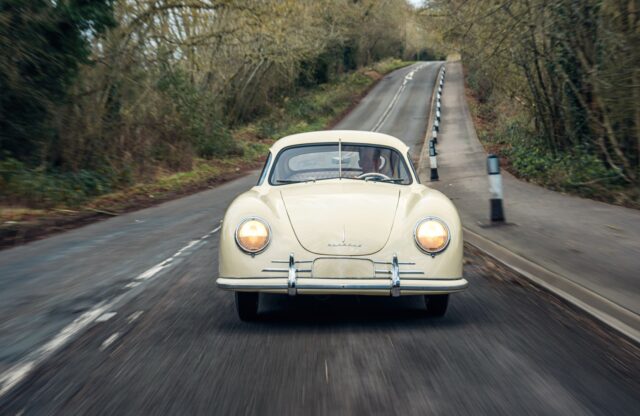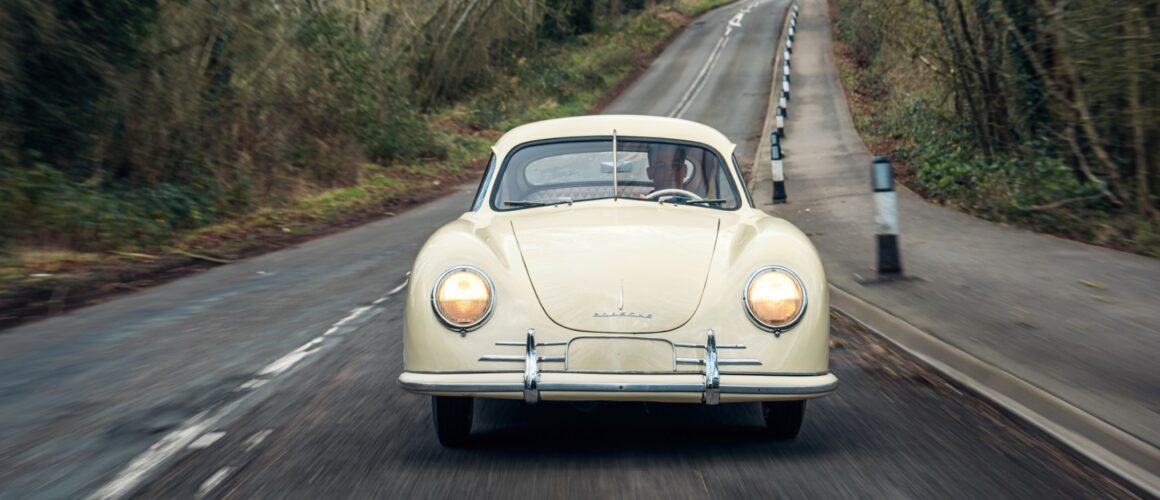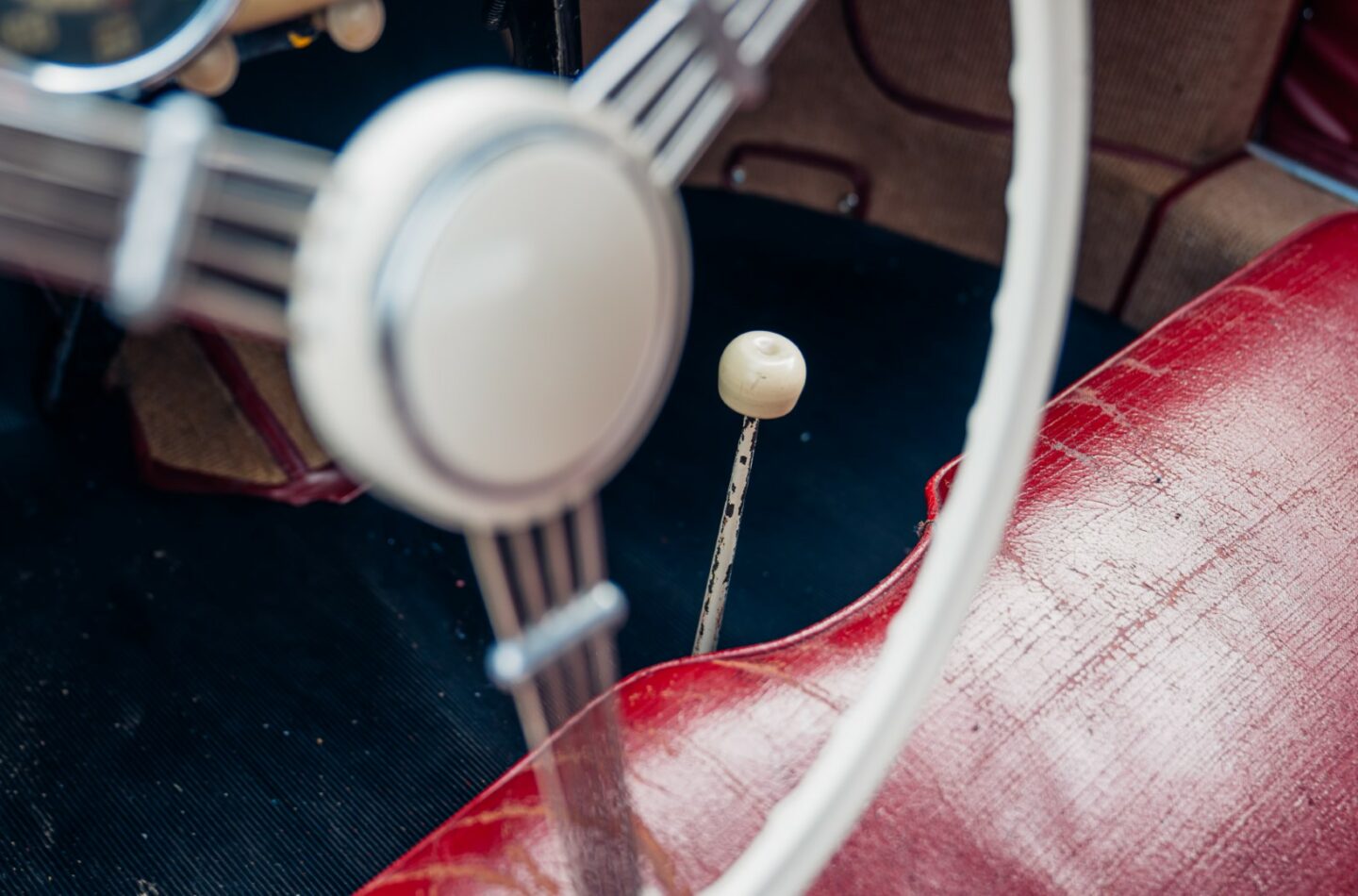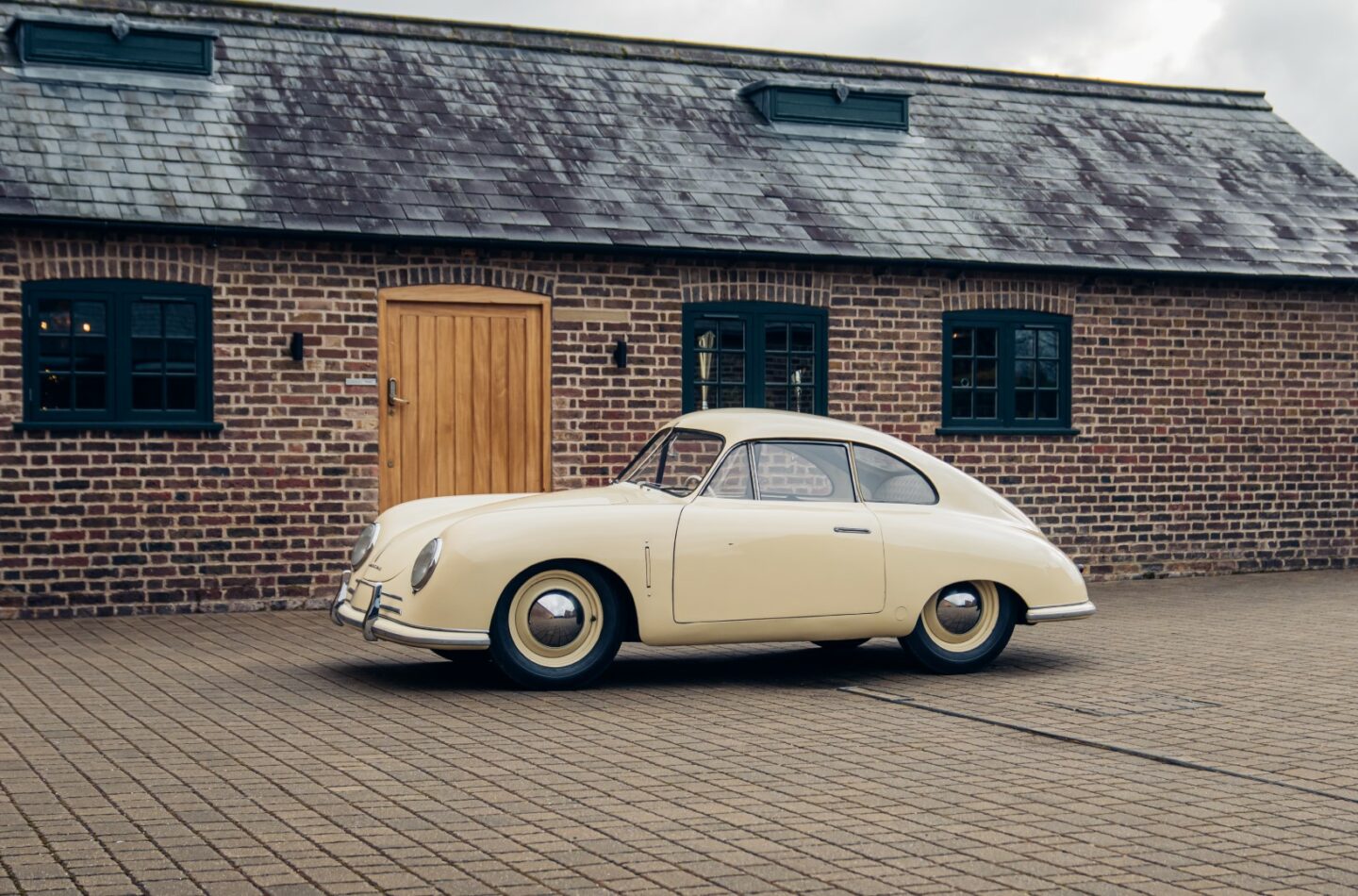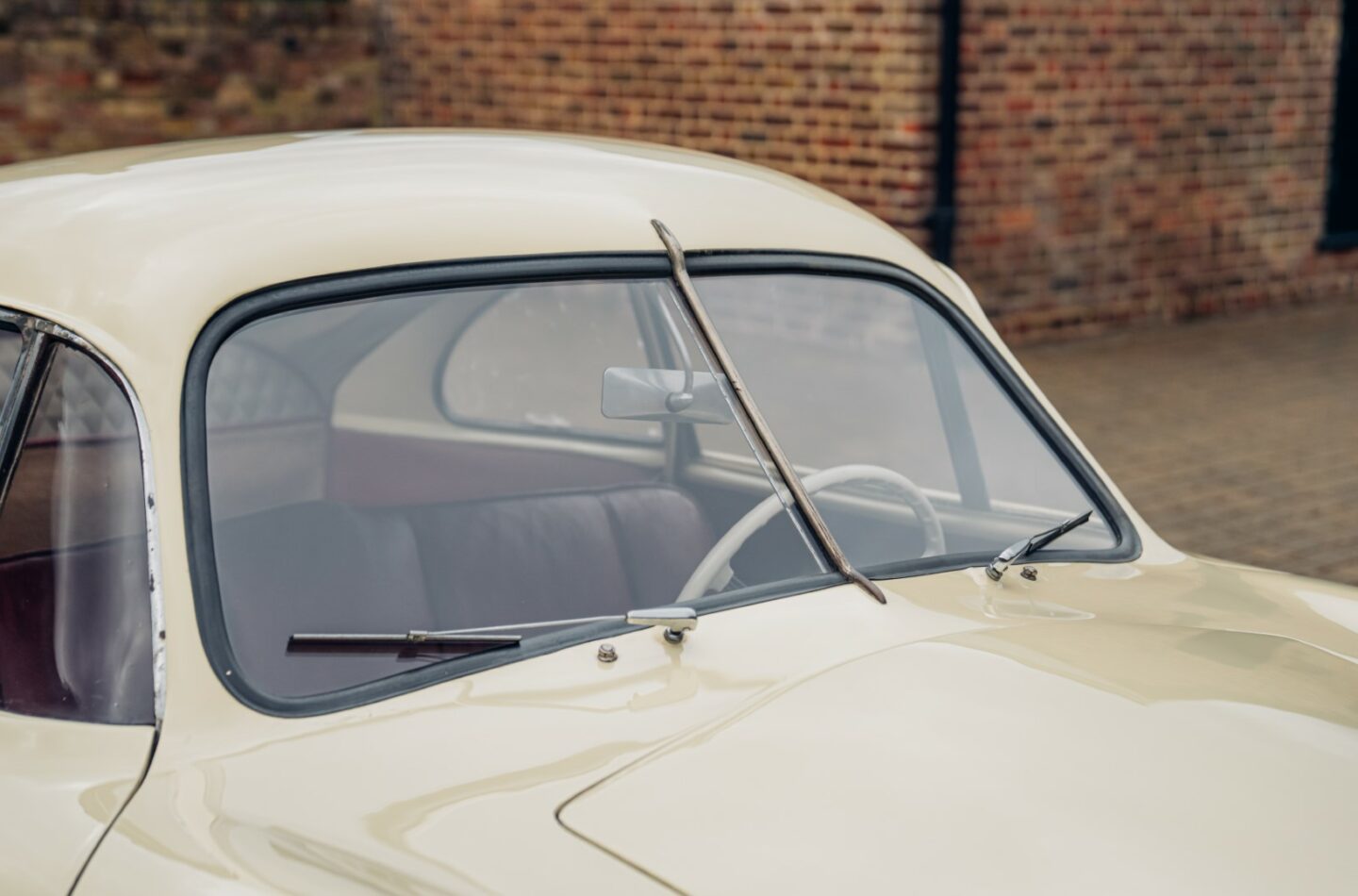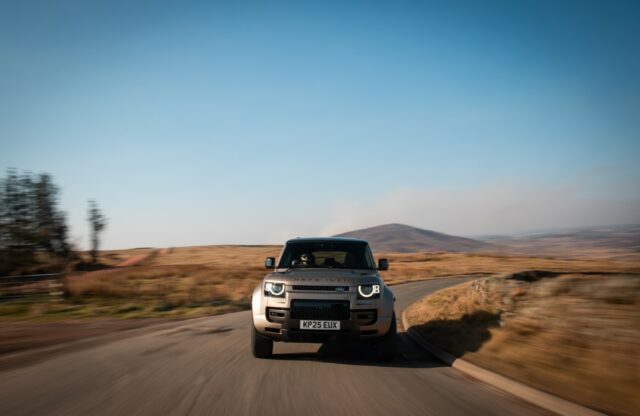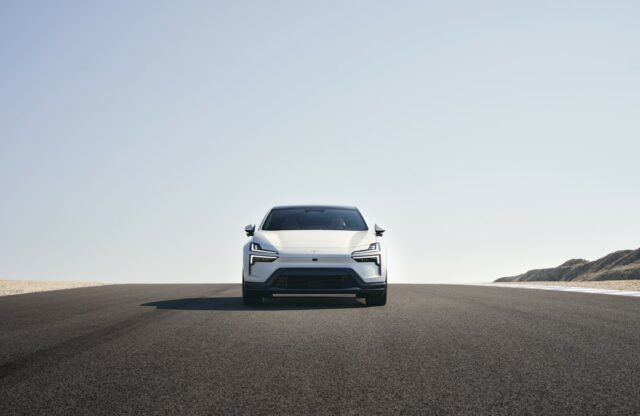WORDS: ALEX GOY | PHOTOS: DK ENGINEERING, DAN BATHIE
In Porsche circles, the 356 is rightly venerated. It’s the first ‘proper’ Porsche, the one around which over 75 years of history has been based. If you want to know where your 911, Cayman, Boxster, Cayenne… whichever… came from, you can trace it back to that car. It’s Porsche’s Doctor No, Philosopher’s Stone, Raiders of the Lost Ark and more. As it was the first Porsche, there are plenty of variants to choose from. There are the steel-bodied ‘proper’ production models, of course, that are comparatively plentiful – but there are few more sought after than the Gmünd cars.
Porsche’s sports car business didn’t start in Germany, but in the Austrian town of Gmünd, in an old sawmill. Founder Ferry Porsche’s first creation, 356/1 was a one-off proof of concept – a mid-engined car with Volkswagen Beetle mechanicals, and a look that would become timeless. The next car, the 356/2, was made available for sale.
Only 52 road machines would be made – eight without a roof, the rest coupés (there were, of course, chassis built and used for racing, although nowhere near as many). Equipped with a 40bhp flat-four in the back, a tyre under the bonnet, lightweight aluminium bodywork, four on the floor, wheels tucked far under each arch and 1940s sci-fi looks, all were hand-built. Porsche’s Austrian facility wasn’t quite as large or high tech as its modern operation, and demand became a little tough to keep up with, so Porsche outsourced some body building and final assembly to the likes of Tatra, Kastenhofer, Keibl and Beutler to keep production flowing. That was, until Porsche moved to Stuttgart in 1950, with the final Gmünd cars being assembled in Salzburg. Not all survive, which bolsters their value rather dramatically.

Its flat-four motor sounds happy to be there, each of its tiny pistons chuntering along waiting to see where its next adventure will take it
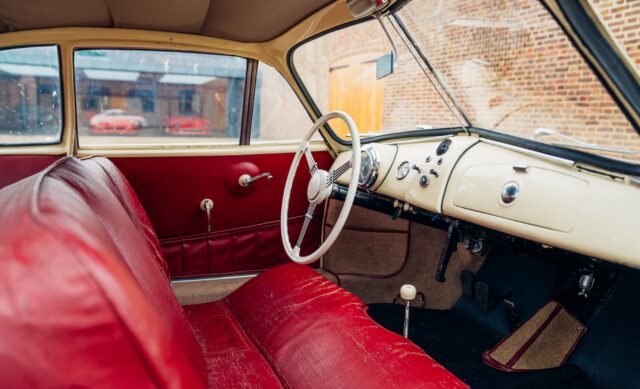
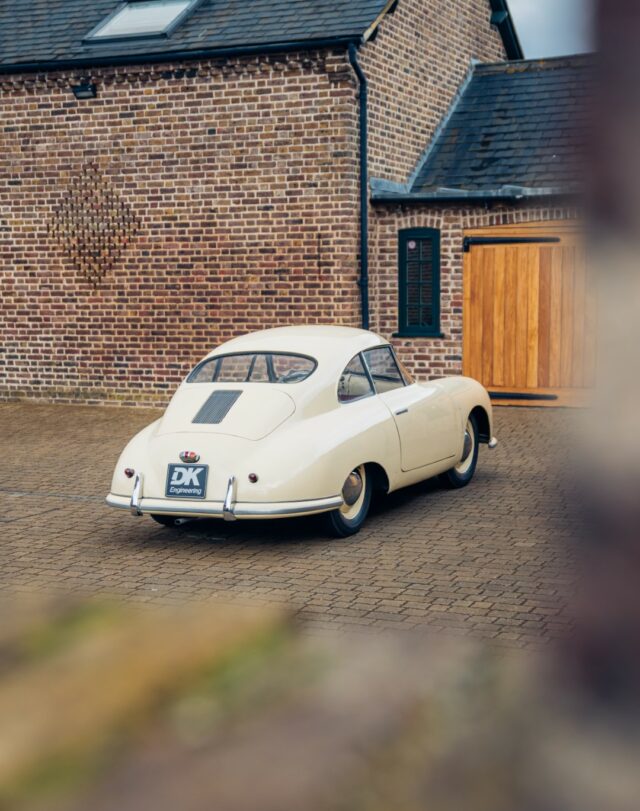
Car no. 356/2-0032 was built in June 1950. It was initially supplied to Scandinavia, where it spent its early years jumping from owner to owner, before heading to America. In 2007 it was brought to the UK, before being bought by DK Engineering in 2023. DK has given the car a service and some gentle TLC to make it ready for a new owner and a fresh lease of life – but not before Magneto had a chance to sample what one of the earliest Porsches feels like in the real world.
Viewing it through a modern lens, it’s a delightfully simple car. There’s a single speedo dial in its cabin, with no rev counter, oil gauges or any such frippery to deal with. A smattering of buttons, a crude indicator switch, a handbrake and keyhole under the dash, and… not much else is there to distract from the road ahead. Behind the seats is a handy space for luggage, and that’s really about it. The 356 is a tiny thing – 3.8 metres long, 1.3m tall and just over 1.6m wide – you’d struggle to find a production car to fit in its footprint today, and certainly not one as compact.
Inside, it feels bright and airy. Plenty of glass surrounds you, letting light in and giving you a perfect view out. The patinated bench seat is springy and comfortable, offering absolutely nothing by way of lateral support. It’s really all rather sweet.
On start-up, its flat-four motor sounds happy to be there, each of its tiny pistons chuntering along waiting to see where its next adventure will take it. Any fears that such a rare car – with such a high price tag (it’s been valued at $3.5m, if you’re keen) – would be in any way difficult need to be sidled away. You do need to double-declutch your way through the gears, and have a vague knowledge of rev matching, but other than that it’s easy. The clutch isn’t too heavy, the gearlever slots into place easily… lift the pedal on the left and off you gently trundle. First and second ratios aren’t particularly long, and because the idea of revving the knackers off a 74-year-old car doesn’t thrill, a hop to third is a wise idea once you feel you should. Third is a long gear, but perfect for town. Fourth is best used if you decide to brave a motorway.
Porsche said the original 40bhp cars could reach 87mph. While that may have been the case seven decades ago, time hasn’t been super-kind to the turn of pace – the 356/2 is fine on the flats, buzzy and exciting almost, but the moment there’s a slight hill it will struggle. Third won’t cut it, and if things get too steep you’ll have to barrel down to first. It can be a touch fraught if you’re not attuned to the car.
You’ll also need to pay attention to the steering. The huge, delicate wheel is a delight to hold, but it offers scant feedback. Another 356 could fit in the dead spot, and the steering system will occasionally apply more lock than expected, or none at all… or both in the same bend with the wheel held firm. Once you’ve figured that something will happen, you can anticipate it and be ready to adjust course as you see fit. Braking is an act of faith, too, but that’s to be expected given the car’s age.
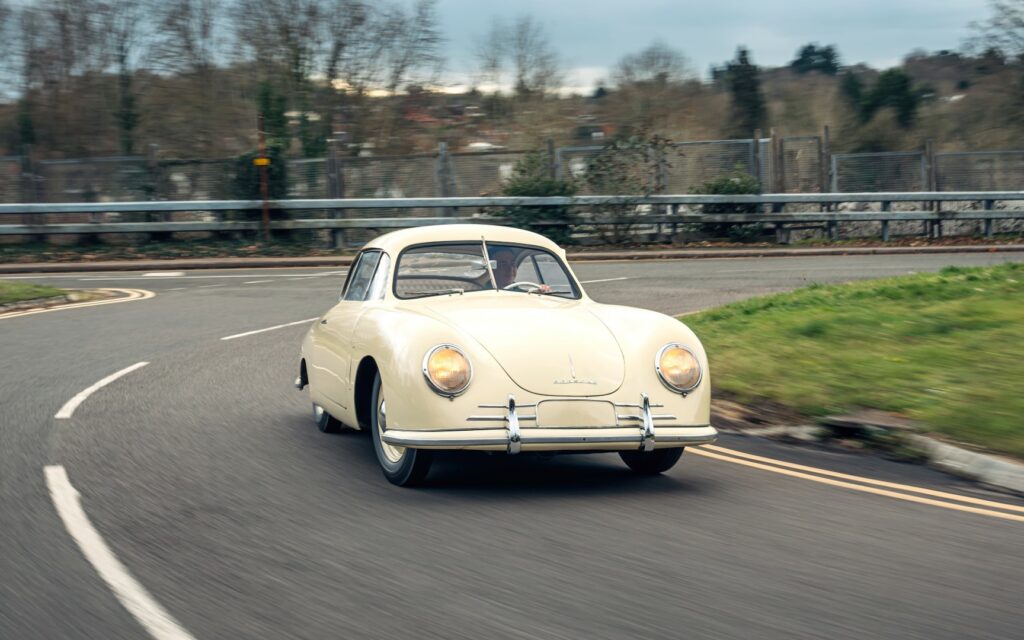
Being tiny and light, with narrow tyres as well, the Porsche moves around rather nicely. You’ll feel the rear shift itself from side to side on occasion. Not as a slide – there’s nowhere near enough power to make that happen – but rather the 356/2 seems to occasionally take a beat to settle itself. The first time it does so is alarming, the few after that bizarre, but then it’s just par for the course.
While it may seem like a car made of compromises, it really isn’t. It has quirks and foibles, sure, but it’s easy to drive, and doesn’t take long to get the hang of. What it does amazingly well is show you exactly where Porsche got ‘it’ from. The 356/2 feels like a looser, still-finding-its-feet lead-up to what we have today. Your view over the hood is familiar, the noise is a few steps removed from what we’ve become accustomed to, the way it shifts its weight rearwards in corners when you give it a bootful… It’s all there, just waiting to be refined. You can feel the potential that Porsche had in it. It’s a moment in time, deliciously preserved.
